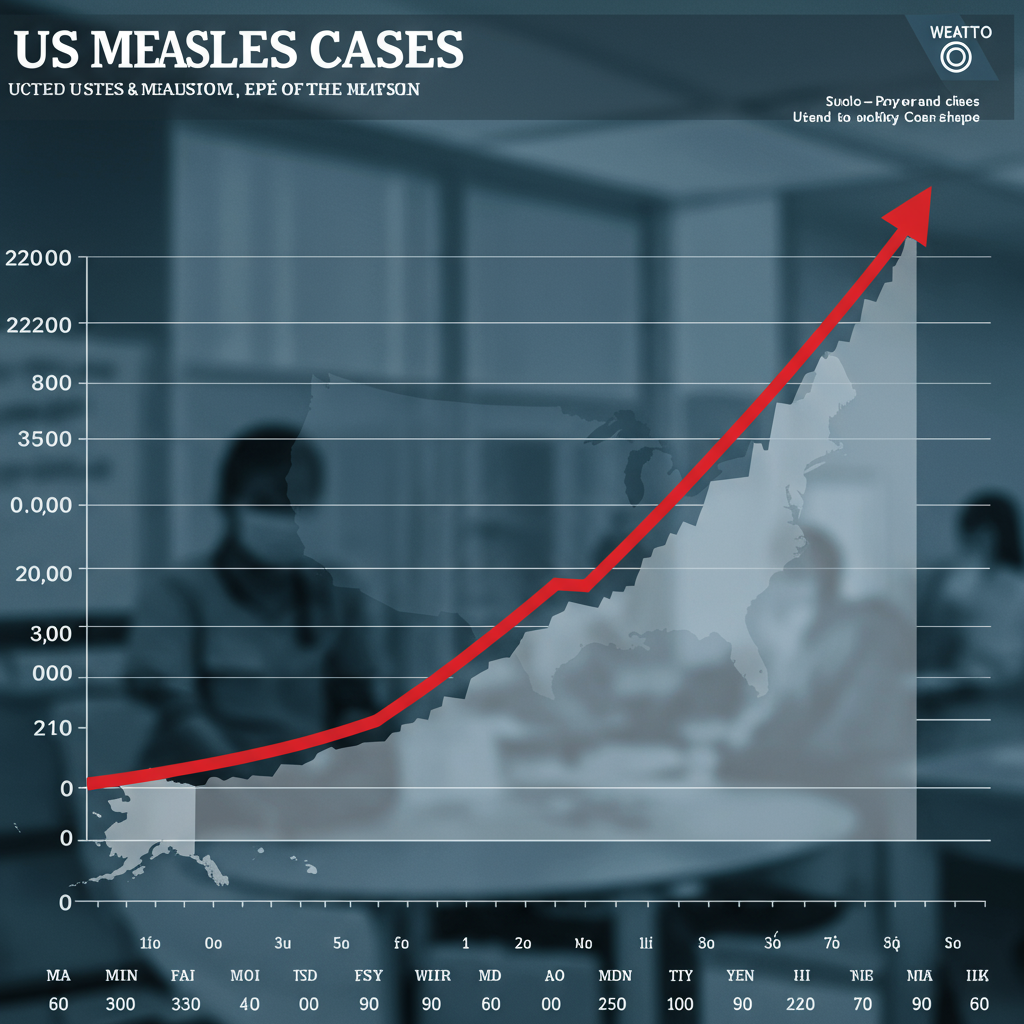The United States is witnessing a concerning rise in measles cases, with the national total rapidly approaching levels not seen in years. The latest data from the US Centers for Disease Control and Prevention (CDC) reveals the increasing spread of this highly contagious disease across the country.
Alarming Numbers: Nearing a Post-Elimination Record
In its recent weekly update, the CDC reported an additional 29 measles cases, bringing the national total for the year to 1,197. This figure places the US just 77 cases shy of matching the 1,274 cases recorded in 2019, which stands as the highest annual total since measles was declared eliminated in the United States in 2000.
So far this year, 35 states have reported measles infections, an increase of one state from the previous week, likely including Arizona’s first confirmed cases of the year.
Outbreaks and Travel Fueling the Spread
A significant driver of the current surge is the increase in measles outbreaks. The CDC has now identified 21 national outbreaks, with four new outbreaks reported in the latest week alone. This total surpasses the 16 outbreaks reported in a comparable prior period (likely 2023). A striking 90% of reported cases this year are part of these outbreaks, a notable increase from the 69% of illnesses linked to outbreaks last year.
While a large outbreak in West Texas has shown a downward trend recently with no new cases reported in that region this week, new cases continue to emerge elsewhere. Dallas County, for instance, reported its first case of the year in a vaccinated woman in her 20s with no travel history – an unusual presentation compared to typical cases. Meanwhile, health officials remain vigilant; a suspected case in Alabama was thankfully confirmed negative after testing.
However, the critical factor driving the spread, particularly in initiating new clusters, appears to be travel, both international and domestic. Health officials across the US are actively tracking exposures linked to individuals who have traveled while infectious, especially during the busy summer season when global measles activity is also high.
Recent examples highlight this challenge:
Authorities in the District of Columbia and Maryland tracked exposures linked to an international traveler arriving at Dulles International Airport who used various forms of public transit.
In Massachusetts, a person with measles visited multiple public locations in Boston before flying to Miami, prompting investigations.
New Mexico saw two travelers diagnosed with measles, leading to potential exposures across three counties.
An infectious person also traveled through Phoenix Sky Harbor Airport in Arizona, leading to public health alerts.
Colorado has investigated cases linked to travel to Europe and exposures on buses and in public places. Earlier cases in the state were tied to a specific airline flight, highlighting how easily measles can spread via air travel, potentially remaining airborne for hours after an infected person leaves the area.
Even domestic airline travel has been implicated, as seen with a Minnesota case linked to travel within the US. Another Minnesota case in an unvaccinated child with no known travel or exposure suggests the potential for undetected community spread.
These travel-linked cases often spark new outbreaks in communities, particularly among vulnerable populations.
Who Is Most Vulneried?
Measles can affect anyone, but certain groups are seeing higher infection rates:
School-aged children (5-19 years old) account for the largest percentage of cases at 37%.
Adults aged 20 and older are also significantly affected, making up 33% of cases.
Children younger than 5 years old represent 29% of infections.
Vaccination Status: The Overwhelming Common Thread
A crucial piece of data underscoring the current situation is the vaccination status of those affected. According to previous CDC reports during this resurgence, an overwhelming majority – approximately 95-96% of reported measles cases this year have occurred in individuals who are either unvaccinated or whose vaccination status is unknown. This highlights that lack of vaccination is the primary risk factor for contracting measles.
For comparison, in North Dakota’s recent outbreak which saw dozens of cases, all confirmed infections occurred in unvaccinated* individuals.
Global Context and Prevention Efforts
The US measles resurgence isn’t happening in isolation. It mirrors concerning trends globally. Canada, for instance, is experiencing a larger outbreak, tragically reporting its first measles death of the year in a premature infant born to an unvaccinated mother. The UK has also warned that summer travel could trigger further surges there.
In response to rising global cases, the CDC continues to recommend that all international travelers be fully vaccinated with the measles, mumps, and rubella (MMR) vaccine. An early MMR dose is specifically recommended for infants aged 6 to 11 months traveling internationally.
Public health officials are actively working to identify potential exposures, conduct contact tracing, and inform the public to prevent further transmission. However, the best defense against measles remains vaccination. The current numbers serve as a stark reminder of the importance of maintaining high vaccination rates to protect individuals and communities from this preventable yet potentially severe disease.



